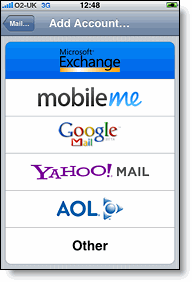Realizing that you've missed an appointment at the doctor's office or missed your kid's recital isn't fun. Sometimes there is just so much going on at once that it's hard to schedule and share everything with the people who need to know. You start sinking under all the events, commitments, appointments, and pressure magnetized to your fridge door. This is where
Google Calendar comes in to save the day (and week, and month...).
If you already use Google Calendar, awesome! There is so much you can do to schedule events and track available/busy slots of time. With Google Calendar you have the ability to to see calendars that are important to you and share your own. You can send invitations to your events, track RSVPs by email, and even allow others to propose times that work better for everyone. It's all very intuitive and can be done from a single screen, allowing you to manage your business, personal, and other calendars. No more calling and emailing participants numerous times to schedule an event. When you know everyone is free, scheduling is a snap! Sharing is a great feature to help you schedule events, keep you in sync, and save you from missing what's important to you.
Share your Google Apps for business calendar as username@business.com with your personal@gmail.com account and give it rights to make changes. Here's how:
- Log in to your Google Apps account and navigate to the calendar at https://calendar.google.com
- Click the gear icon at the top right corner, then click Settings.
- Click over to the Calendars tab, then click Share this calendar on the right-hand side.
- Add your personal@gmail.com address and give it "Make changes AND manage sharing" permissions.
- Click Save.
Now you can manage your business calendar while you're signed in to your personal account.
If your business calendar is on an Exchange server, you can share it to your personal Gmail account by following these steps. Note that you cannot make changes to your business calendar from Gmail.
Next, share your personal@gmail.com calendar with your business calendar and with the Gmail accounts of each of your family members, like child1@gmail.com, child2@gmail.com, spouse@gmail.com.
Enabling or disabling calendar sharing is a breeze. Add a couple of email addresses, and if desired, set their permissions (free/busy, see all event details, or make changes) so that they don't have to keep asking you to make changes since you've authorized them to.
- Click on the drop-down arrow next to the calendar you want to share.
- Click Share this Calendar.
- Add the email addresses of people who you'd like to have access and set their permissions.
- Click Save.
Once you have shared the appropriate calendars, ask your family members to share theirs with you as well so you can make changes to their calendars when needed.
Now you have the power to see what everyone else is up to (depending on the sharing permissions, of course) and other people can see what you're up to.
You also don't have to constantly check your calendar to see what's coming next in your day. Google Calendar provides several different ways for you to be notified of upcoming events including via text message, an email, or a pop-up. You can also get these notification on your
iPhone or Android device if you've set up your Google Account to sync with it. If your kids have a smartphone or tablet, they can be synced to their Google calendar to receive notifications of events. (No more excuses for being late for your soccer practice or kids whining that they didn't know about it!)
With Google Calendar, you can access your schedule online from anywhere. If you forget your laptop or tablet, just open the Google Calendar app on your
Android or
iOS device to see all your events.
Organizing your schedule doesn't have to be a burden. With
Google Calendar, its simple to keep track of all of life's important event all in one place. And the best part is, it's completely free!





